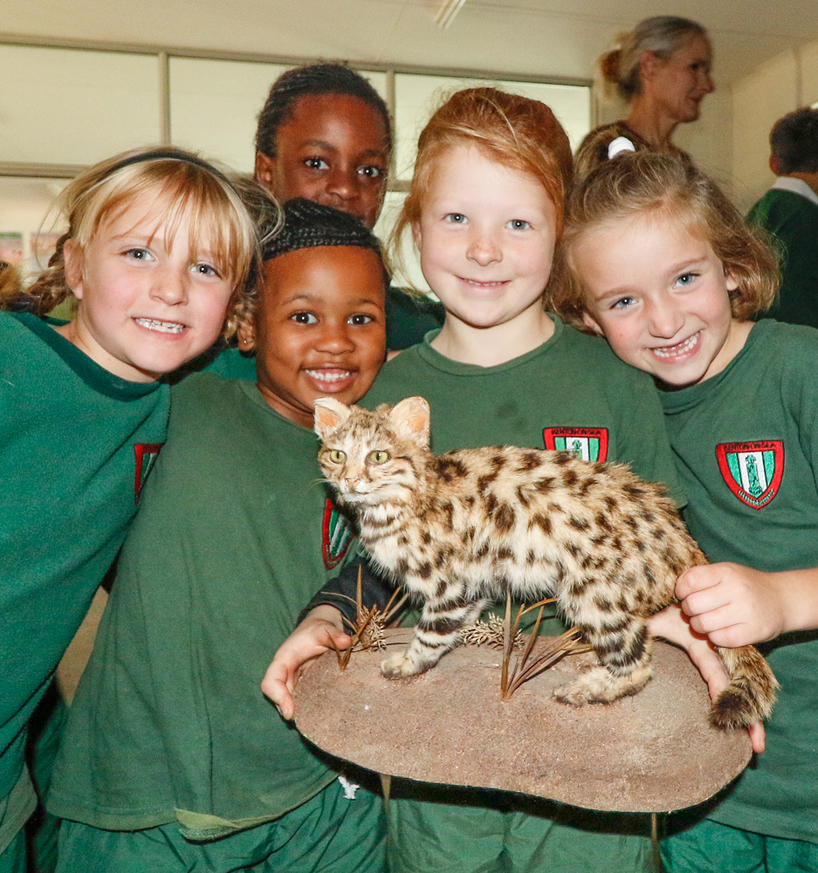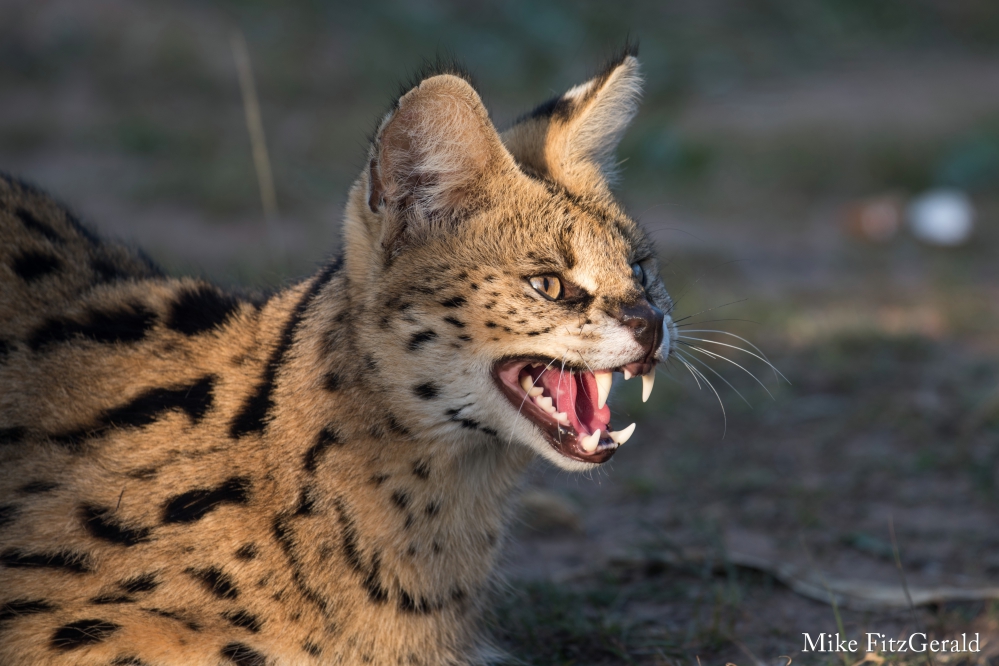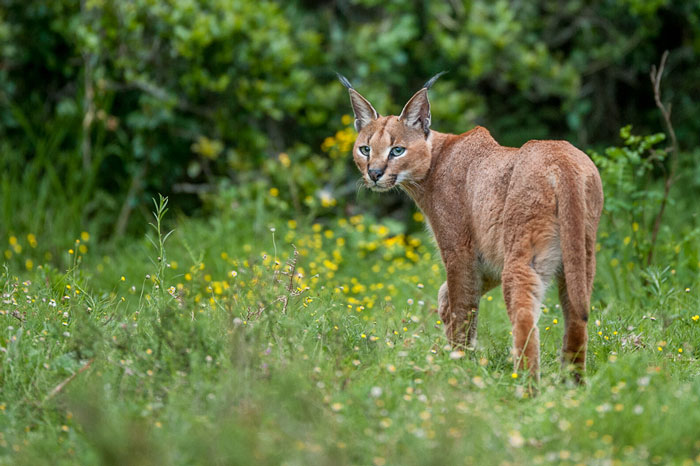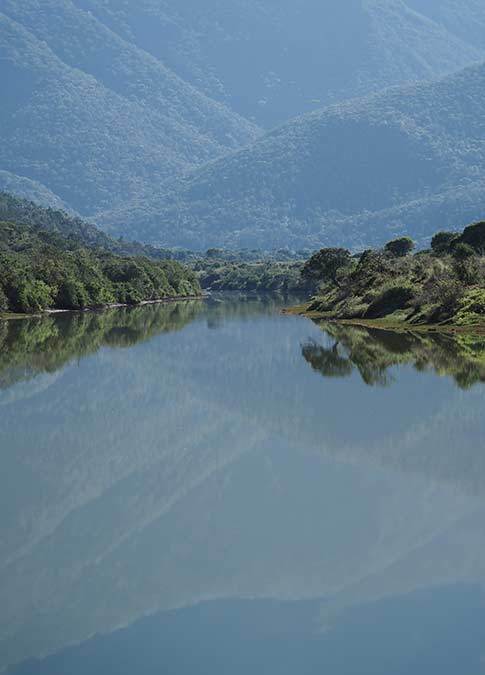African Wild Cat Education

Education is the most powerful weapon which you can use to change the world ~ Nelson Mandela
Do you know how many different wild cat species can be found in southern Africa? You will most likely know the common big African wild cats which include the lion, leopard and cheetah, but have you heard of the four smaller indigenous wild cat species found in our area? These lesser know African wild cats don't get a lot of attention as they are elusive and very rarely seen, but they play an important role in our environment.
Kariega Game Reserve and the Kariega Foundation joined forces with the Cat Conservation Trust to share information about African wild cats with students in our local schools. African wildcats proved to be a very popular subject in our latest community environmental education programme.
Four Lesser Know African Wild Cats
The four lesser know wildcats are found in southern Africa - servals, caracals, African wild cats and black-footed cats.
The largest of these small African wild cats is the serval. Servals have very long legs, the longest of all felines relative to their body size. They use their legs to jump (sometimes over three metres) and can also run very fast (up to speeds of 80 kilometres per hour) to catch their prey. Their long legs and necks also allow servals to see over tall grass. Their ears are also used to detect prey, even those burrowing underground. Read about our serval breeding and reintroduction programme.

Next in size is the caracal. This African wild cat is reddish brown in colour and adults weigh in at around 18 kilograms. This is a medium-sized feline and usually measures approx. 45 centimetres at shoulder height. Caracals are disliked by livestock and poultry farmers as they can cause havoc when with domestic animals, especially chickens and lambs. Caracals are nocturnal and can be seen on early morning and evening safari drives. Read more about caracals at Kariega Game Reserve.

This African wild cat looks very similar to an average house cat that has gone walkabout in the bush! African wild cats are sandy brown or grey with distinctive orange ears and black strips on their tails. They weigh around five kilograms and are only about 35 centimetres at shoulder height. Unfortunately African wild cats are prone to hybridizing with feral domestic cats which means that their blood lines are mostly mixed. African wildcats are mostly crepuscular, meaning that they are most active around dawn and dusk. These wild cats are very rarely seen at Kariega.

The smallest African wild cat species is the black-footed cat. This species is also known as the small spotted cat or anthill tiger. Black-footed cats weigh a mere average of one and a half kilograms (3,3 lbs) and only live in very isolated areas of southern Africa. These cats are so rarely seen that not much is known about their natural behaviour and ecology. There are so few of these small spotted cat that they are listed as a CITES 1 threatened species and vulnerable on the IUCN Red List of Threatened Species. Despite their name, only the pads of the black-footed cat's feet are black. Their fur varies in color from cinnamon to tawny and has black or brown spots that merge to form rings on their legs, neck, and tail. Despite their size, these miniature ferocious felines are the most successful African wild cat when it comes to hunting.

African Wild Cat Education in Local Schools
The Kariega Foundation's Environmental Education programme now includes eight local schools in our three nearby communities. Over the last year children in these schools have been learning about different environmental issues with a focus on how to conserve their immediate environment. Subjects covered have included water conservation and drought, soil conservation and land degradation and the need to conserve endangered species.
Our aim is to awaken the hearts and minds of these young people through education and encourage them to look after the natural environment and wildlife found in our area.
On 31 May 2019 Marion Holmes from the Cat Conservation Trust joined us at two local schools to focus on African wild cat education. Students and teachers from Klipfontein Primary School and Kenton Primary School both enjoyed this special visit along with the chance to see the African wild cats for themselves. Marion travelled from the small town of Cradock, over 200 kilometres from Kariega Game Reserve, to educate the children (and adults) about the different species of African wild cats, their importance in our natural ecosystem and the threats they face. These fascinating lessons came alive with videos, photos and the opportunity to touch taxidermied specimens of African wild cats. This was an experience that will stay with the children for a very long time.
Marion runs a breeding facility for small southern African wild cat species. She has been working with wild cats for the last 20 years and loves to share her knowledge about them. The Cat Conservation Trust also runs a very active conservation awareness programme that spreads awareness and information about lesser-know African wild cats. She relies heavily on donations to keep the education and breeding work alive. She used to get funding from the National Lottery. If you would like to find out more please contact her on info@karoocats.org.
African Wild Cats on Kariega Safari
Were you fortunate to spot any African wild cats while on safari at Kariega? If so, please share your experiences, images and videos with us by posting them on our Facebook page, via Twitter and Instagram. We would also welcome your comments below.
Please visit our Kariega Foundation page for a full list of conservation and community projects.
Images thanks to guest Mike FitzGerald, field guide Brendon Jennings and the Cat Conservation Trust.









